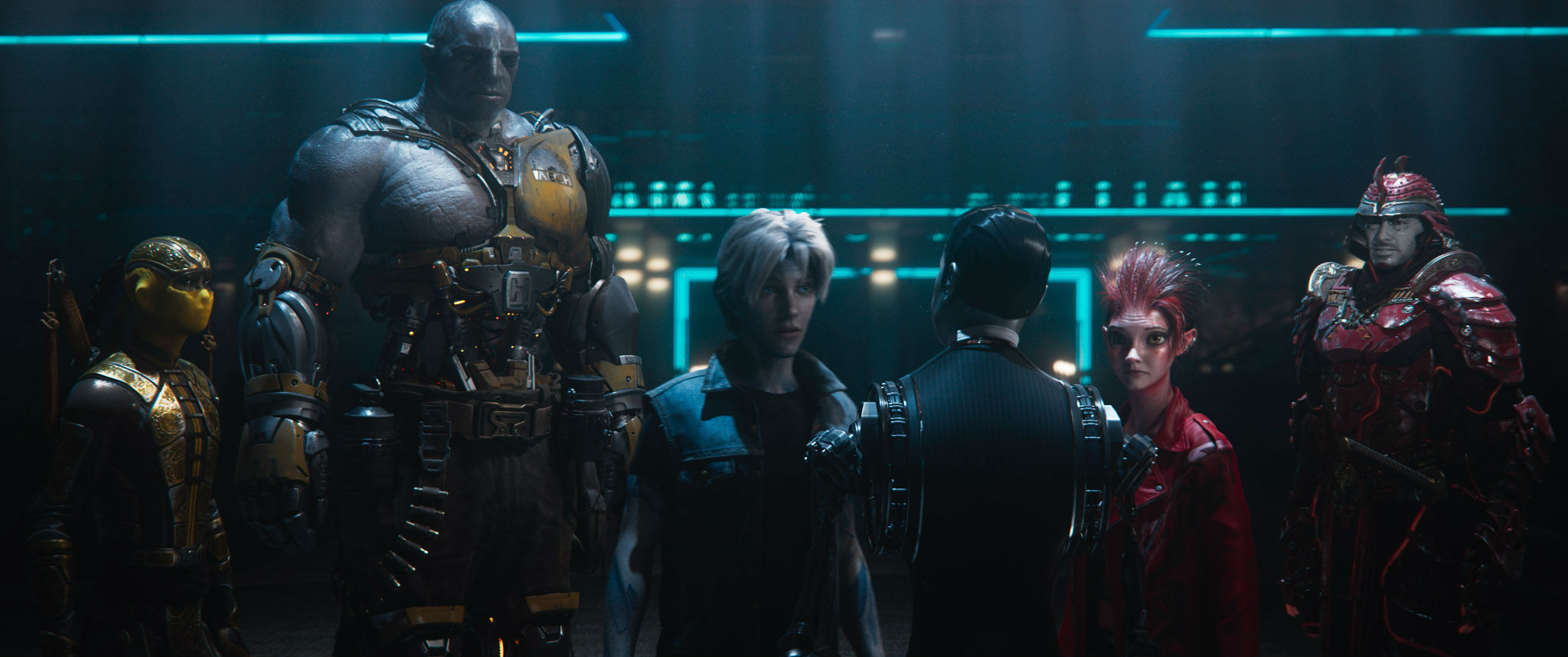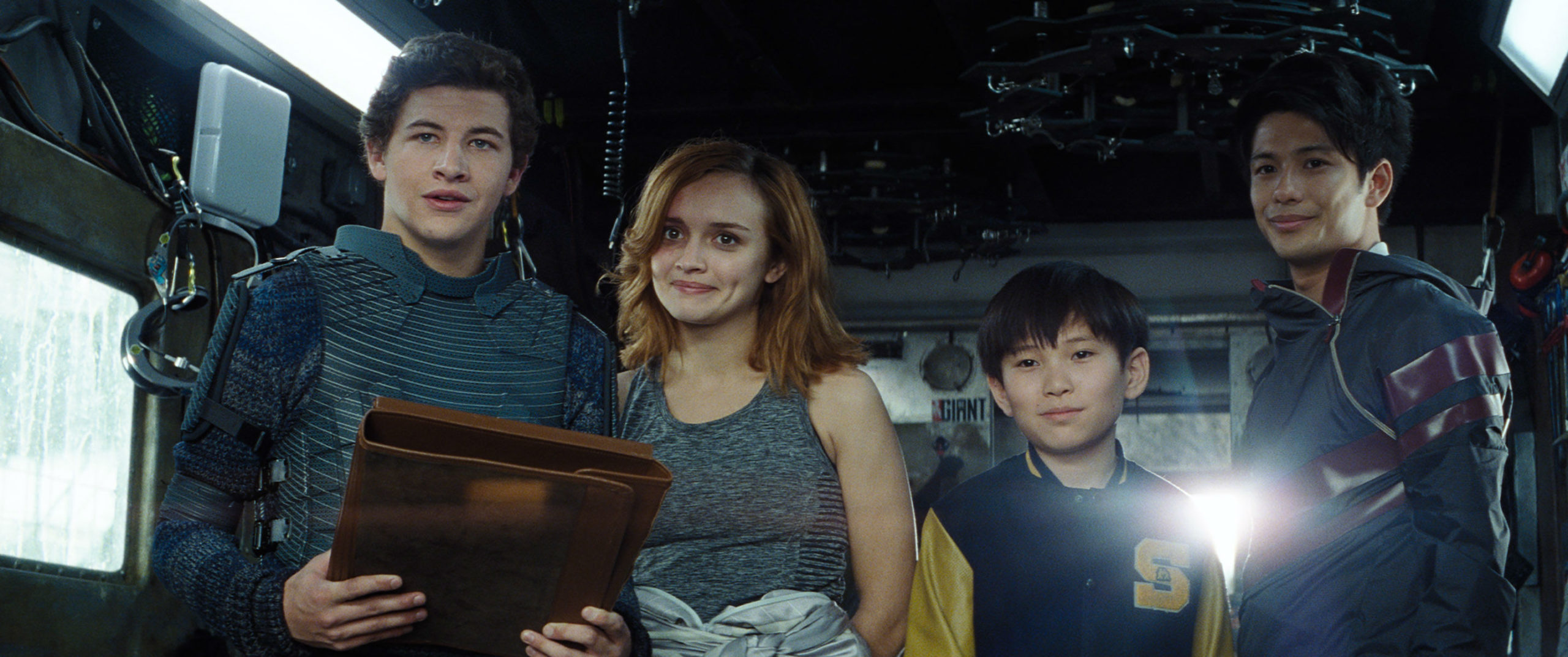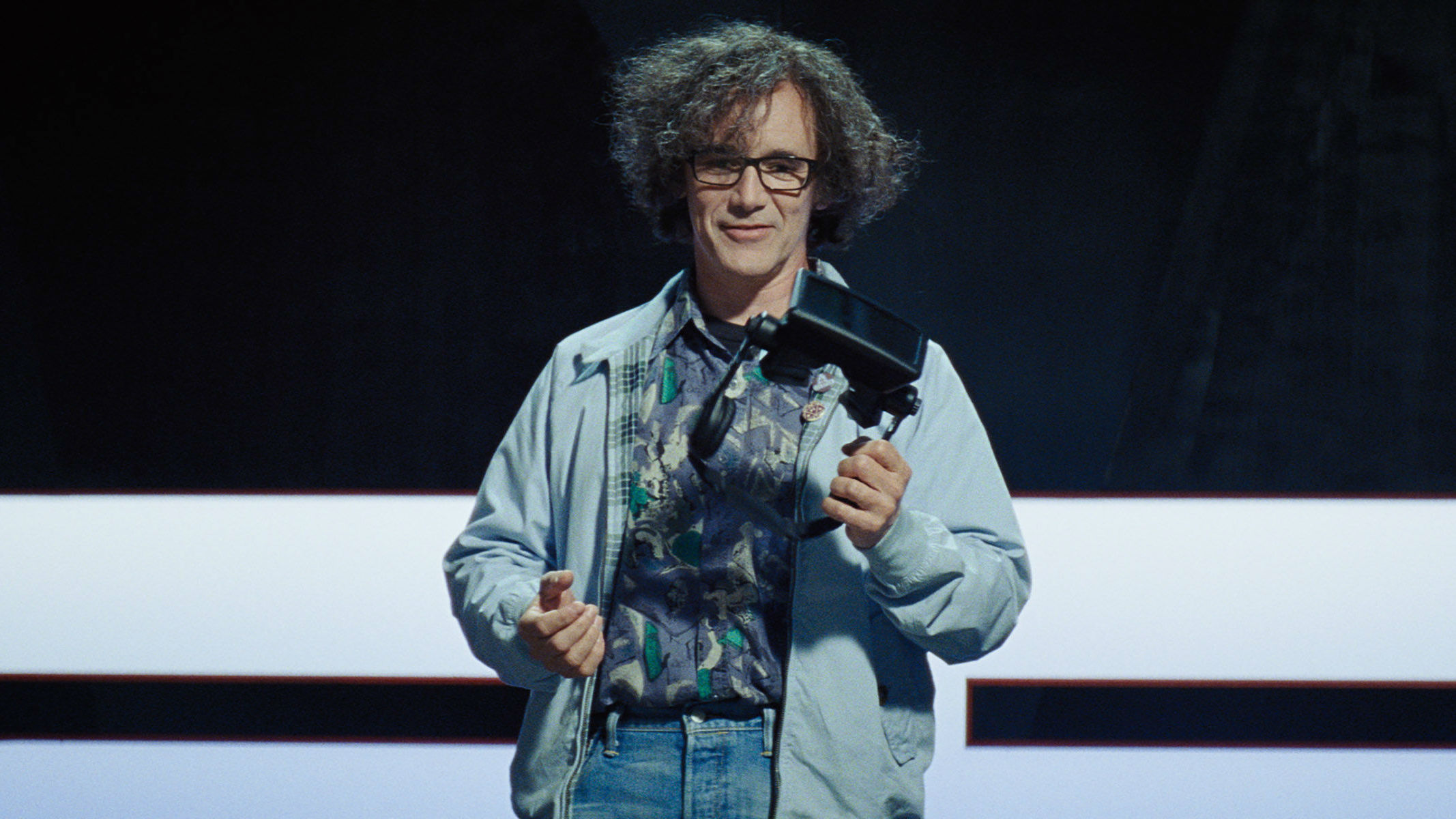Ready Player One was a very divisive book, and now it’s a very divisive movie. We are no exception. While my colleagues Beth and Evan didn’t care for it, I’m a fan of Ernest Cline’s love letter to pop culture, although I fully admit it has problems. So I was excited that Steven Spielberg would helm the movie adaptation, though I knew the two would differ. What I didn’t know was how much the film was going to challenge and recontextualise my feelings about the book.
Steven Spielberg on the set of Ready Player One with Simon Pegg and Mark Rylance. Image: Warner Bros.

Most of why I enjoy Cline’s book is the adventure of it. Yes, it’s full of needless pop culture references and questionable character development, but the basic, bare-bones idea bristles with excitement: An infinite, Willy Wonka-type race for an Easter egg that grants control of the world. From the very first pages, it grabbed me. When I finished, I raved about the story, the set pieces and how much I enjoyed it – but, admittedly, I never really considered the book beyond that. Cline certainly had things he wanted to say in the book (and things he says without knowing it), but those rarely occurred to me because the story was so propulsive. It was a frivolous, highly-entertaining read that surely spoke to me more than most because of my own personal pop culture obsessions.
As expected, the movie changes a lot of that. For example, it’s less about pop culture properties than the book is. The whole idea of society being shaped by James Halliday’s obsession with the ’80s is almost an afterthought on screen. When the movie starts, the first challenge has already been discovered and the only people doing it are the “egg hunters”, called “gunters”. They’re also the only people still researching Halliday and obsessing over his quest. (Even the term “gunters”, a distinction for people who are professionally playing Halliday’s game, isn’t used much in the movie.) The pop culture references themselves are abundant but largely balanced across all eras, even beyond how Cline does it in his book. Halliday’s contest may have changed the world in both versions, but in the movie, it didn’t stop the world from evolving. The movie makes it feel like, until Parzival wins the first challenge, most of the world has given up on the quest for the Halliday’s Egg, which is not the feeling you get in the book.

The avatars of the High Five figure out the second gate. Image: Warner Bros.
I liked that. I liked that probably 70 per cent of the characters and things you see in the Oasis are just random things and not crazy pop culture references. It makes the movie feel less pop-culture obsessed and, somehow, more accessible. Most people in the Oasis don’t want to be Beetlejuice or a Ninja Turtle, they want to be a virtual expression of their own personality. As a result, pop culture feels more like set dressing than the focus of the story. (And in many cases, it’s literally just set dressing, such as the Pee-wee Herman bike in Aech’s apartment or the Raiders of the Lost Ark poster in Halliday’s room). There’s no doubt these were Spielberg’s attempts to try and curb some of the book’s more tame criticisms, and I think it worked.
What worked less for me was Spielberg’s thematic authorship. The book mostly feels as though it’s just about a bunch of kids trying to win money and fight an evil corporation. The movie adds a very obvious cautionary tale about the dangers of technology. Or, I should say, it tries to; on my first viewing, I felt like that message – or any message, really – was shoehorned into the third act and not developed as a cohesive thread.
That’s when it hit me. The book’s narrative doesn’t really sustain a truly meaningful thematic overlay. There are subtextual things in there, but most of the book is basic. Yes, it’s an adventure set in this incredible virtual reality, but it’s a simple, surface-level story – and throwing in a message that virtual reality needs to be used less is counterproductive at best. If two hours of your movie is rail guns and DeLoreans, and the last 20 minutes is “Live life and go outside”, it feels as though the message was put in as an afterthought, even if it wasn’t. The two contradict each other, and the bulk of the film outweighs the end.

Oh, right, real people. That’s Tye Sheridan, Olivia Cooke, Philip Zhao and Win Morisaki. Image: Warner Bros.
I felt like Spielberg tried his best to make the movie about something, but failed. It was as though Cline’s narrative wasn’t strong enough for Spielberg’s storytelling and the two were clashing. I thought, “That was a fun movie, but it just didn’t work.” Or so I thought after my first viewing.
On a second viewing, though, I realised Spielberg does a better job than I first realised with this problem. The pro-living, anti-technology ideas are introduced earlier than I originally noticed, when Wade first meets Samantha in the real world, later with the harshness of the Loyalty Centres, and beyond. It also helps to know it’s an issue and to try and enjoy the film strictly on a surface level. If you do that, the adventure story really does soar in ways similar to the novel, but much more cinematically and helpfully streamlined. It also helps immensely that the character Samantha/Artemis is made less of a trophy and more of a team leader.
The second viewing also made me realise the movie isn’t just about advocating for reality over fantasy. It’s also a complex exploration of Halliday as a character and, therefore, a deconstruction of celebrity. Though it’s certainly part of the book, the movie makes it much, much more obvious that Halliday created his game as a way of exploring his biggest regrets and faults. For someone to win, they’d have to understand him as a person and come to sympathise with him. The winner would realise that just because Halliday created this wonderful world, it doesn’t mean he lived in a wonderful world. He humanises himself through a video game and demystifies his legend. By the end the characters, and the audience, understand him more as a person and less as a symbol.

Mark Rylance as Halliday. Image: Warner Bros.
Few filmmakers could have balanced all of these things – not to mention the intense digital effects and the necessary laundry list of intellectual property clearances – and still made a movie that’s entertaining and worth watching. Spielberg did. It might not all come together in a way we’d expect from the director, and sure, it still has a few uncontrollably nerdy scenes that are pure pop culture parades, but that’s OK with me. That’s part of Ready Player One‘s DNA.
Spielberg gave Ready Player One a depth I didn’t realise the book was missing until I saw the film. Again, Ready Player One has its other issues, but Spielberg absolutely improved upon the book in this regard, and the movie is richer for it. And he did it while keeping true to the spirit of the book and making a movie that stands alone, too. It’s what you’d expect of Spielberg, frankly – it just took me a little while to see it.
